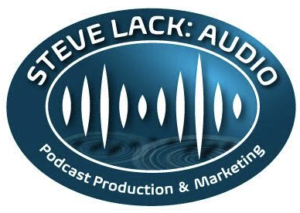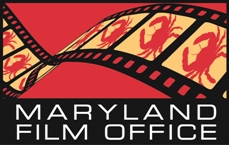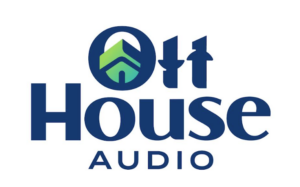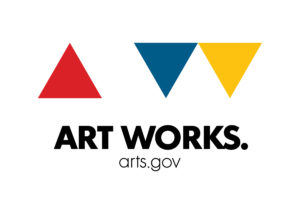WIFTI Summit 2012
University of California Washington Center in Washington, DC
Friday, November 30, 2012 11:45a – 1:15p
Writer: Hannah Buchdahl, WIFV DC Member
It’s complicated. Public versus private domain. ‘Fair Use’ versus Paying-up-the-wazoo. Copyrights. Clearances. Licenses. Finding footage is only half the battle. Figuring out if you can use it, how you can use it, and how much you have to pay for it is the real headache. But the experts on hand for this WIFTI panel were able to provide some useful guidance and food for thought.

They included: Elizabeth Klinck, a visual researcher and member of WIFV Toronto; Nan Halperin, a researcher with ITN Source – one of the world’s largest, oldest global archives; Bonnie Rowan, a veteran researcher who spends her days in the “time capsule” that is the U.S. Archives and Library of Congress; Jocelyn Shearer, in charge of footage sales from the relatively new yet vast Discovery archive; and Peter Jaszi from AU’s Washington College of Law, providing the all-important legal perspective. WIFV DC’s own Judith Snyderman moderated the lively discussion. Among the highlights:
- It’s still a slippery slope. The most dramatic change in recent years is the prevalence of digital archiving, though not everything everywhere can possibly be digitized, databased and uploaded to the web for viewing; downside is the loss of institutional knowledge (i.e. the trusted librarian who instinctively knew where to find things)
- There are different rules in different countries. Canada for instance, has what’s known as “fair dealing” as opposed to “fair use”.
- There’s almost always room to negotiate depending on how much footage you need and how you plan to use it; some footage clearinghouses have ‘preferred rates’ with particular archives which can help offset the cost to clients/producers.
- The job of a ‘visual researcher’ in film can be critical and provide much added value to a project; a good researcher knows how to weed through the maze of imagery and find the golden nuggets
- DC has one of the best, most accessible– and free- collections to be found anywhere, at least when it comes to digging into the past. Works of the U.S. government are in the public domain. There’s a treasure trove of material, including production stills from old government documentaries and various non-copyrighted images. Rowan suggests going to the National Archives and Library of Congress FIRST, to see what you can get on the cheap. And then turn to alternate resources to fill the gaps.
- Discovery only started licensing its content about 18 months ago to producers outside Discovery-commissioned projects; the footage owned entirely by Discovery from the past 25 years is not available through any alternate resource and focuses on relatively recent imagery (similar to a Corbis or Getty as opposed to an historical archive)
- Aggregators of images don’t actually own the content; sometimes it may be easier (and cheaper) to go directly to who shot the material, if possible
- Other places/sites of note: DVIDShub.net (for military stuff); Presidential Libraries, Civil Rights Museum and Library; Holocaust Museum, National Library of Medicine, Vanderbilt University, footagefarm.com, criticalpast.com (top-secret tidbit – you may want to use this site to track footage back to its original source for direct acquisition/negotiation)
- It’s impossible for every outlet to digitize every bit of footage or photo, so some things simply no longer exist or need to be transferred to a screenable format upon request. You can expect to pay some sort of processing fee regardless of whether you ultimately use the material.
- On the legal side, some good news for cash-strapped filmmakers in search of footage. The courts seem to be getting more friendly toward fair-use arguments and the like.
- There’s often a false assumption that if it’s on the net, it’s free (YouTube, etc.), but there’s still a genealogy of ownership. On the plus side, those images are just as subject to fair-use and fair-dealing as any other source.
- Afraid of expensive lawyers when the budget is tight? Jaszi says there is a network of lawyers who will offer advice and guidance to filmmakers for free. And resources are also available at AU’s centerforsocialmedia.org – including the Documentary Filmmakers’ Statement of Best Practices in Fair Use http://www.centerforsocialmedia.org/fair-use/best-practices/documentary/documentary-filmmakers-statement-best-practices-fair-use and “Yes, You Can!” – Where You Don’t Even Need Fair Use http://www.centerforsocialmedia.org/fair-use/related-materials/documents/yes-you-can-where-you-dont-even-need-fair-use
- In terms of looking toward the future… debate rages over what constitutes “documentary” or “educational” programming so the rules for non-fiction/reality programming are yet to be fully defined; there is no (or very limited) work being done to systematically save and archive web content that can vanish in a heartbeat when a temporary site goes away.
- If you see something of interest on the local news that may be of use down the road, call the station asap to try and get a copy of the footage; retaining and maintaining footage is not part of every organization’s core business model or mission – so don’t assume it will still be accessible a week later, let alone years. Think ahead.
About the Writer: Hannah Buchdahl, WIFV DC Member
Hannah is a freelance writer and producer for a variety of news, entertainment and corporate clients as well as the cofounder and chief contributor (as “Mainstream Chick”) to Chickflix.net, a relatively new site featuring movie reviews from unique female perspectives.
Like us on Facebook https://www.facebook.com/WIFVDC
Follow us on Twitter: https://www.twitter.com/WIFV_DC
Follow our Blog: http://wiftisummit.wordpress.com

















